INTRODUCTION:
The 18th century witnessed a revolutionary transformation in the world of fashion, with elaborate designs, luxurious fabrics, and distinctive silhouettes defining the era. From the opulence of the Rococo period to the classic refinement of Neoclassicism, this article delves into the key fashion trends, silhouettes, and influential designers that shaped the sartorial landscape of the 18th century.
Rococo Fashion: Ornate Opulence (1715-1774)
The Rococo era marked a departure from the strict formalities of the previous century, embracing an aesthetic characterized by intricate details, pastel colors, and an emphasis on naturalistic motifs. Fashion became a vehicle for self-expression, and fabrics such as silk, brocade, and lace were highly sought after. It was characterized by its ornate and decorative style. It emerged as a reaction against the formal and rigid fashion of the preceding Baroque period. It was closely tied to the overall Rococo art movement, which emphasized lightness, elegance, and the pursuit of pleasure.
- Silhouette:
Women: The Rococo silhouette for women was characterized by a rounded bosom, narrow waist, and wide pannier skirts that extended the hips.
Men: Men’s fashion featured a fitted coat, waistcoat, and breeches, often accompanied by ornate lace, embroidery, and powdered wigs.
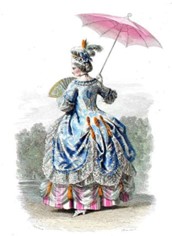
- Key Fashion Trends:
Robe à la française: A loose-fitting gown with pleats in the back that allowed the wide pannier skirts to cascade elegantly.
Watteau pleats: Flowing pleats at the back of gowns, named after the French artist Antoine Watteau.
Powdered wigs: Elaborate wigs adorned with feathers, ribbons, and jewels, symbolizing wealth and status.
Pastel Colors: Soft pastel shades were favored in Rococo fashion, reflecting the light and delicate aesthetic of the era. Pale pinks, blues, lavenders, and greens were commonly seen in women’s gowns and accessories. These light hues complemented the feminine and ethereal look of Rococo fashion.
Ruffled Details: Ruffles were another hallmark of Rococo fashion. They adorned various parts of the gown, such as the neckline, sleeves, and skirt. Ruffles were often created with delicate lace or sheer fabrics, enhancing the overall softness and femininity of the attire
Fabrics: Rococo fashion favored luxurious and lightweight fabrics, such as silk, satin, and delicate lace. These fabrics were often pastel-colored or adorned with intricate floral patterns, contributing to the overall delicate and feminine aesthetic.
Exquisite embroidery: Delicate floral and botanical motifs adorned garments, adding a touch of opulence and femininity.
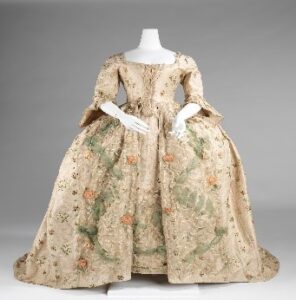
Robes à l’anglaise: This style emerged towards the end of the 18th century as a simpler alternative to the elaborate French gowns. The dresses had a fitted bodice, a high waistline, and a skirt that fell smoothly without the use of panniers. It showcased a more natural silhouette.
- Influential Designers:
Madame de Pompadour: As the official mistress of King Louis XV, Madame de Pompadour set fashion trends with her elegantly embellished gowns.
Rose Bertin: Known as the “Minister of Fashion,” Bertin was the personal dressmaker of Queen Marie Antoinette and influenced fashion across Europe.
Thomas Gainsborough: While primarily known as a portrait painter, Thomas Gainsborough also had an impact on Rococo fashion through his artwork. His portraits captured the elegance and grace of the upper-class society, showcasing their fashionable attire and hairstyles.
François Boucher: François Boucher was a renowned French painter who often depicted mythological and pastoral scenes. His works embodied the essence of the Rococo style, featuring soft colors, flowing draperies, and intricate details, which had a profound influence on the fashion trends of the time.
Neoclassical Fashion: Elegance Redefined (1774-1799)
Neoclassical fashion, also known as the Georgian fashion refers to the clothing styles that were prevalent during the 18th century. It was influenced by the rediscovery of ancient Greek and Roman art and culture, which had a significant impact on the arts, architecture, and fashion of the time. With the advent of the French Revolution, fashion underwent a significant shift, moving away from the excesses of the Rococo period. Neoclassical fashion emerged, inspired by the ideals of ancient Greece and Rome, characterized by simplicity, symmetry, and clean lines. The fashion trends were characterized by elaborate and extravagant styles associated with the Baroque period. However, as the century progressed, a shift towards a more restrained and classical aesthetic occurred, inspired by the neoclassical revival.
- Silhouette:
Women: The Neoclassical silhouette for women featured high waistlines, flowing drapery, and columnar shapes, drawing inspiration from ancient Greek garments.
Men: Men’s fashion adopted a more tailored and simplified approach, with knee-length coats, waistcoats, and tailored trousers.
- Key Fashion Trends:
Chemise dress: A loose-fitting gown made of lightweight fabrics, reflecting the influence of ancient Greek tunics.
Directoire style: As the French Revolution progressed, fashion became more austere, with women adopting high-waisted, empire-style dresses with simpler details.
Redingote: A riding coat-inspired garment that became popular for both men and women, featuring a fitted bodice and flared skirts.
Sheer Fabrics: Neoclassical gowns often incorporated diaphanous and lightweight fabrics such as muslin, silk gauze, and chiffon. These sheer materials added a sense of ethereal beauty and allowed for the display of the underlying chemise or slip.
Neoclassical Motifs: Fashion designers drew inspiration from classical art and architecture, incorporating motifs such as Greek key patterns, laurel wreaths, and mythological symbols into their designs. These motifs were often featured as decorative elements on hems, bodices, or accessories.
Neoclassical Colors: The color palette of neoclassical fashion was typically light and delicate. Soft pastel shades such as pale pink, sky blue, lilac, and mint green were popular choices. These colors reflected a desire for simplicity and purity, mirroring the ideals of classical beauty.
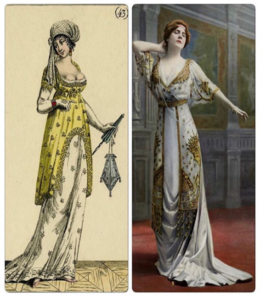
Influential Designers:
Marie-Antoine Carême: A prominent French chef and designer, Carême revolutionized men’s fashion by introducing the tailcoat, a staple of formal attire to this day.
Thérésa Tallien: A trendsetter during the French Revolution, Tallien popularized high-waisted gowns and became a symbol of the new, liberated woman.
Joshua Reynolds: Another renowned portrait painter of the period, Joshua Reynolds, also contributed to neoclassical fashion through his representations of women in classical-inspired garments. His influential works helped shape the aesthetic ideals of the era.
Thomas Pitts (1737-1793): Thomas Pitts was an English tailor and designer who introduced neoclassical elements into men’s fashion. He created tailored suits with simplified lines, inspired by classical Greek and Roman drapery, which became fashionable among the English elite.
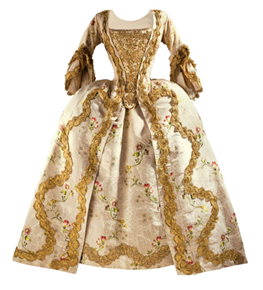
Thomas Gainsborough (1727-1788): Although primarily known as a portrait painter, Thomas Gainsborough’s artistic style and depictions of elegant clothing had a significant influence on neoclassical fashion. His paintings often showcased women wearing flowing classical-inspired gowns, which inspired fashionable trends of the time.
REFERENCES:
- https://artsandculture.google.com/story/yQVxozIBUz__KQ?hl=en
- https://history201spring2019.omeka.net/exhibits/show/spring2020exhibit/neoclassicalclothingmovemen
- https://www.voucherix.co.uk/fashion-and-beauty/18th-century-rococo-fashion/
- “How fashion reflected the transition from Rococo to Neoclassicism in the 18th Century.” PDF by Dr. Alison FitzGerald from National University of Ireland Maynooth
CONCLUSION:
The 18th century was a remarkable period of sartorial evolution, from the extravagant opulence of Rococo fashion to the refined elegance of Neoclassicism. The fashion trends, silhouettes, and influential designers of this era left an indelible mark on the history of fashion. Today, we can still witness echoes of their influence in modern design and aesthetic sensibilities. As we celebrate the revolutionary fashion of the 18th century, we pay tribute to the designers and trends that shaped an era defined by glamour, elegance, and a quest for self-expression.
Author: Saloni Gaikwad


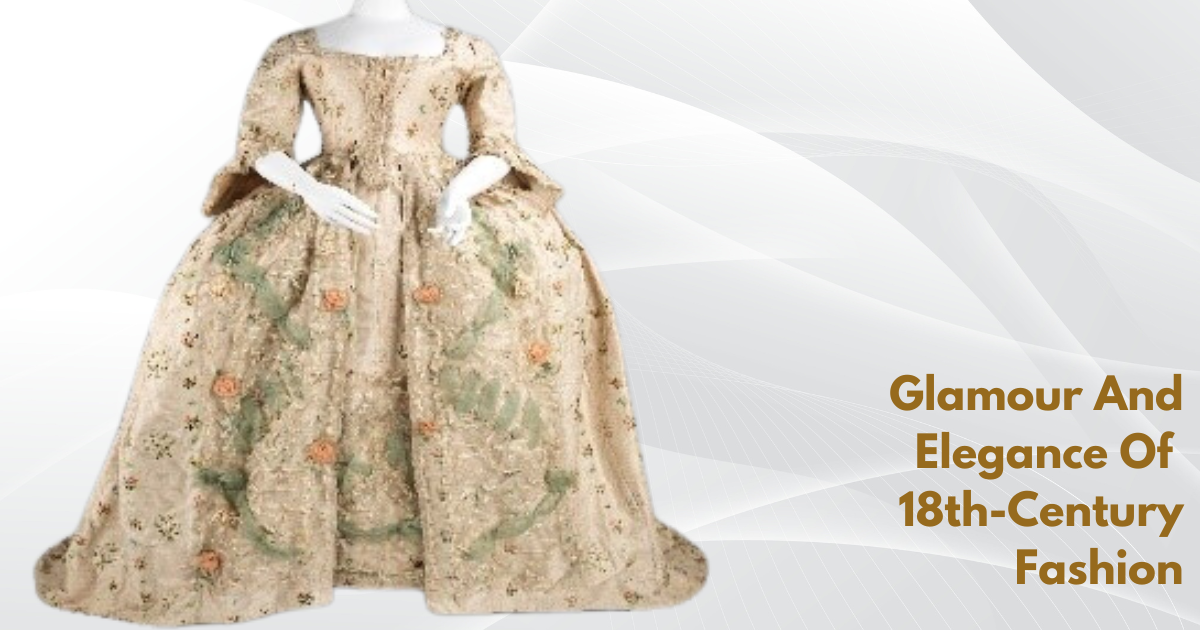

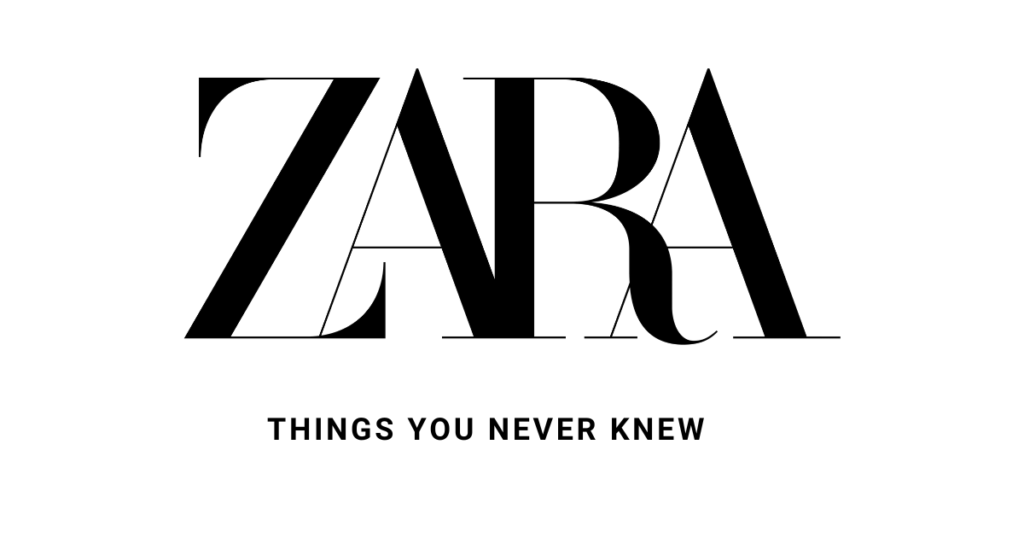
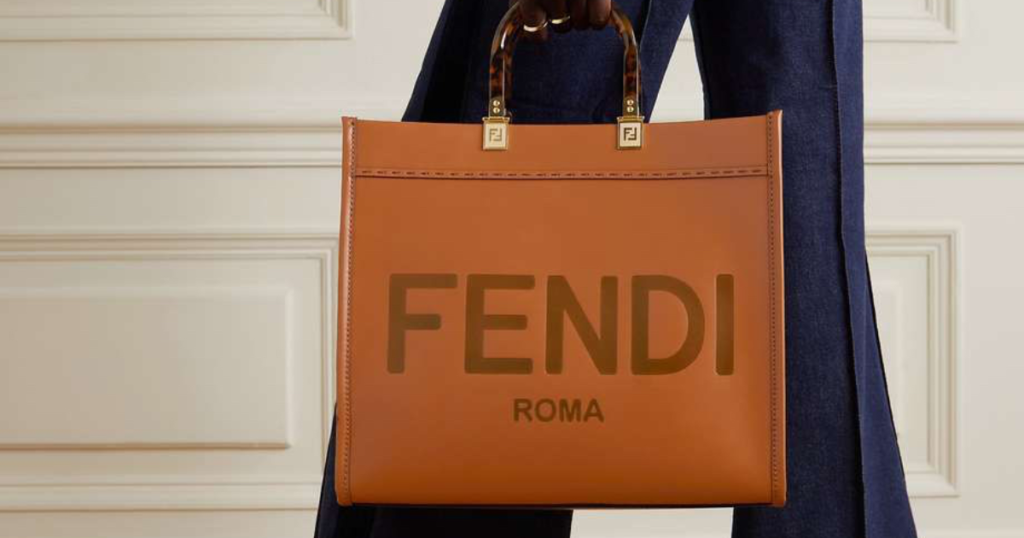

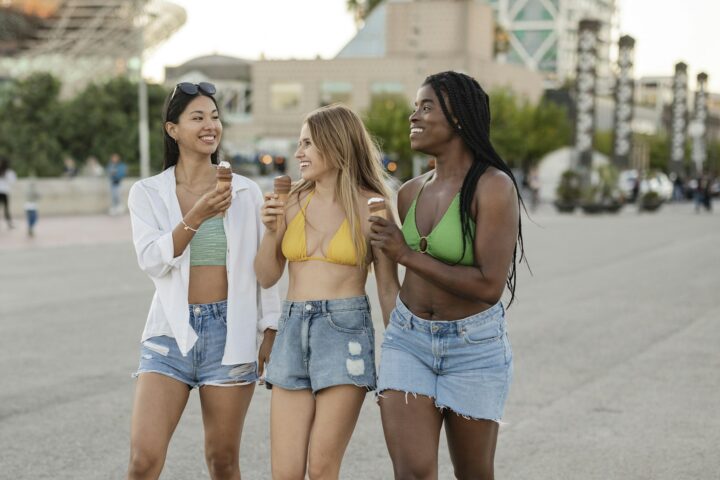


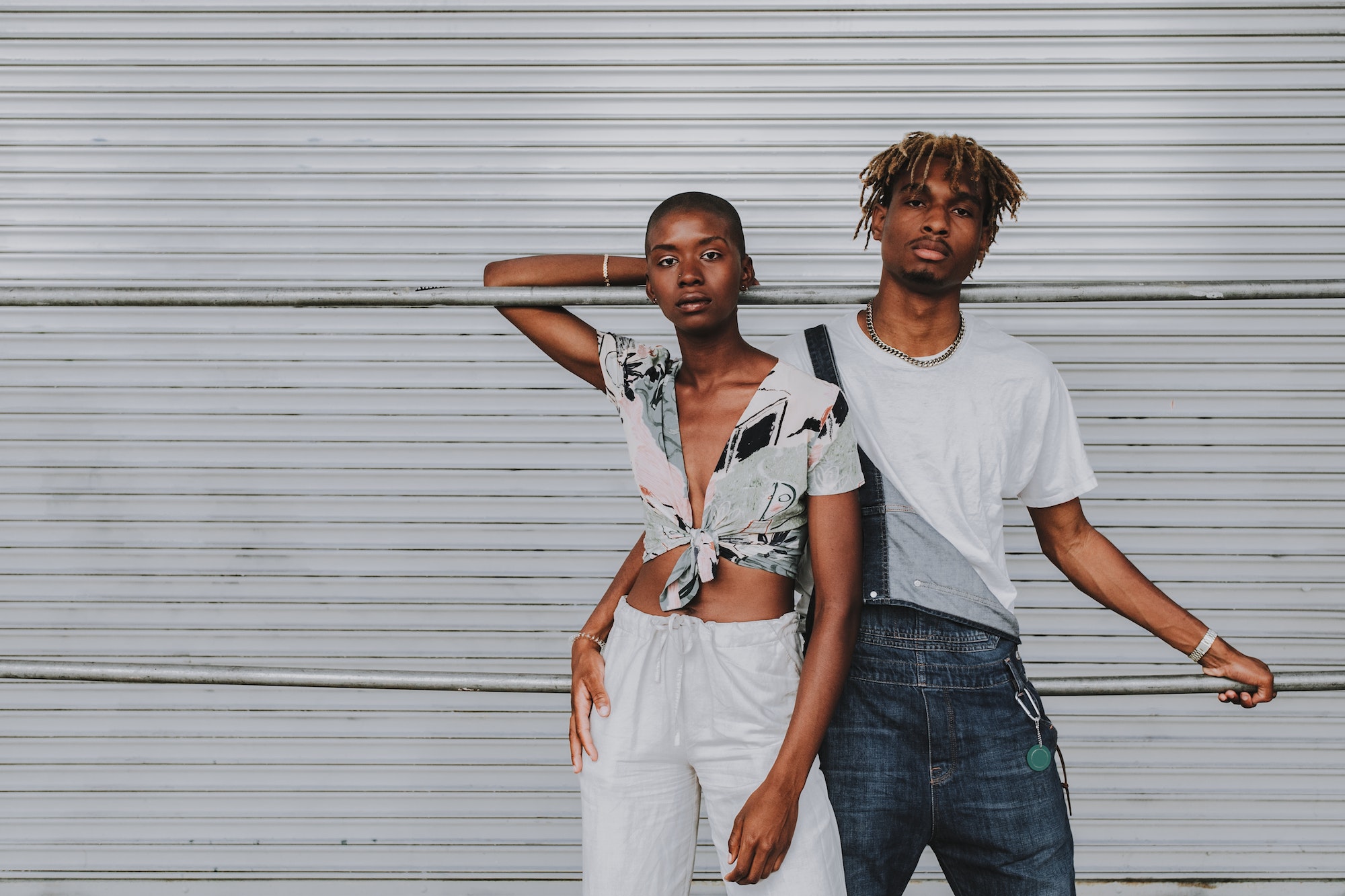
Howdy! Do you know if they make any plugins to help with SEO? I’m trying to get my blog to rank for some targeted keywords but I’m not seeing very good gains. If you know of any please share. Kudos!